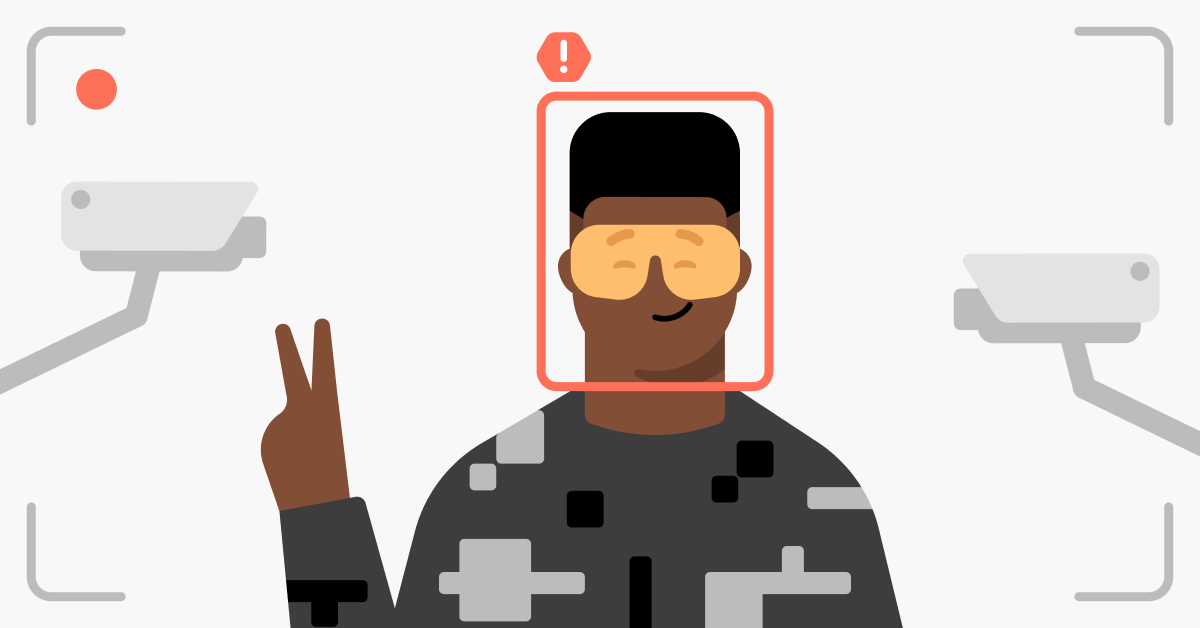What is Amazon Rekognition? And should it worry you?
When someone mentions facial recognition technology, the imagination is quick to draw images of dystopian realities seen in books, movies, or TV. Intimidating or not, facial search capabilities now unlock phones, allow entrance to facilities, or, like Amazon Rekognition, even contribute to personalizing the customer experience. What is the Amazon Rekognition service, and should it worry you?

Table of Contents
Table of Contents
Amazon Rekognition: What is it?
Amazon Rekognition (or AWS Rekognition) is a cloud-based video and image analysis service that uses object and face recognition technology to improve your applications. The service employs deep learning technology and machine learning expertise to analyze any image or video users store in Amazon’s simple storage service (Amazon S3). Using this technology, you can access or restrict media by entering criteria such as scenes, text, objects, unsafe content, or custom labels (like logos).
What is Amazon facial recognition used for?
Amazon Rekognition offers facial recognition technology as part of its image and video analysis services. The technology includes features such as celebrity recognition, highly accurate facial analysis, and face liveness detection. While celebrity recognition enables the identification of famous individuals within images or videos, facial analysis can provide insights into facial attributes such as gender, age, and emotions. Finally, the face liveness feature detects live faces and is a suitable substitute for verification tools when accessing applications and services.
How does Amazon Rekognition work?
While facial recognition technology is not a novelty by now, its work principle can still be somewhat vague. With this thought in mind, let’s answer the question: How does Amazon Rekognition identify people?
As mentioned, Amazon Recognition uses deep learning technology and machine learning to run its service. This means the system’s deep learning models have been trained on huge amounts of data (in this case, videos and images with human faces) and can recognize patterns and features within visual content. After receiving images, Amazon Rekognition deep learning models analyze the content and, using deep learning “knowledge,” define facial features, emotions, and identity. Upon your request, the system can search, categorize, and restrict content by various labels (for example, creating picture folders that include only smiling people) or manage access to certain apps.
Along with faces, the system can also recognize objects, text fonts, and movement, allowing you to sort content by specific scenes or objects visible in the video (or image).
What are the AWS Rekognition features?
As a product of Amazon web services (AWS), Amazon Rekognition uses the AWS system to enable its facial and object recognition features across multiple apps. While we’ve already mentioned some AWS Rekognition attributes, you can find a detailed explanation of every feature below.
- Labels. This feature defines objects, scenes, and landscapes that are visible in the content. With its analyzing capabilities and labels, AWS Rekognition can define specific actions in videos and images (for example, distinguishing people who are outside, playing basketball, swimming, and so on). The feature also analyzes custom labels (for example, product logos), adding more precision to your queries.
- Content moderation. The feature defines and restricts inappropriate, offensive, or unwanted content, helping to avoid harmful content on social media or e-commerce sites.
- Text detection. AWS Rekognition detects text fonts in videos and images, converts them to text readable to machines, and can be used as a label when looking for specific content.
- Face analysis and detection. This feature detects faces in images and videos. AWS Rekognition is sophisticated enough to distinguish gender, glasses, facial hair, and age range.
- Face verification and search. This feature works as an authentication tool and a label to find specific faces in your image or video gallery. It scans live faces and compares them to a reference to confirm the identity of the person accessing restricted or protected content.
- Celebrity recognition. AWS Rekognition can define celebrity faces in images and videos. This feature works well as a custom label or while building databases for advertising, media industry, or marketing.
- Workplace safety. This feature analyzes work camera footage to determine people, their walk paths, and used gear. The AWS system can “notice” workplace equipment such as gloves, helmets, PPE kits, and masks, making it a handy tool in healthcare, construction, and manufacturing industries.
Facial recognition: Security concerns
In general, facial recognition software may sound like an exciting tool that simplifies our everyday lives. However, this technology has some significant security concerns that can cause serious damage to businesses and individuals.
The major concerns of face recognition technology include facial recognition privacy and cybersecurity. In some cases, people can be unaware of facial scanning and monitoring processes, prompting them to be exposed to massive surveillance practices (such as mass government surveillance in China) that blur or even violate the right to privacy.
In addition, face recognition technology requires a significant amount of information to provide efficient results and uses biometric data as a reference point. Businesses that use facial recognition systems must store that data in robust storage with top-level encryption and access control. If a facial recognition database suffers a cyberattack, the stolen data can compromise thousands of people.
Finally, while facial recognition technology evolves rapidly, inaccuracies and false positives can still occur. These risks pose a threat of wrongful accusations and serious legal consequences.
Should you use Amazon Rekognition?
You’ve read about the good, you’ve read about the bad. Now’s the time to decide whether you should use the Amazon Rekognition service. While we can neither recommend nor discourage you from using this software, here are the key points that you should evaluate:
- AWS Rekognition is a useful tool to process large volumes of visual content.
- It allows users to control how the results of facial recognition and other analyses are handled.
- Its facial and object recognition are powerful features that can benefit workplace safety, visual search, and content moderation.
- Facial recognition technology poses great privacy and cybersecurity risks.
- Some AWS Rekognition critics highlight Amazon’s lack of transparency regarding inquiries about the software’s accuracy and fairness.
- Amazon has taken a questionable approach to privacy in the past, including the Astro robot threats and the excessive Amazon surveillance for employees policy.
When browsing the internet, it’s important to remember that your online security depends on you. To feel safer on the internet, consider using a VPN. While NordVPN (or any other VPN) won’t protect from the facial recognition used by apps or services, NordVPN’s server network will allow you to mask your IP address, making you less exposed to malicious actors. At the same time, the Threat Protection feature will provide an extra layer of security by blocking unwanted ads, suspicious URLs, and web trackers.
